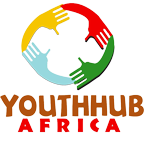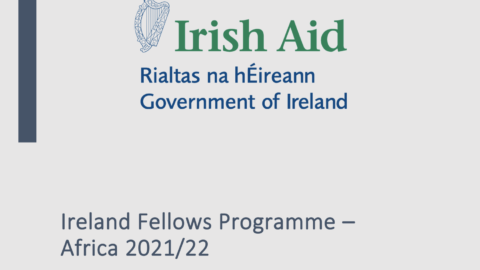In addition to the African Development Indicators 2011, the World Bank released 50 Things you didn’t know about Africa!
Youthhubafrica shares the 50things you probably didn’t know about Africa
ECONOMY
1. Nigeria has the largest population in Sub-Saharan Africa (154.7 million people) and accounts for 18% of the continent’s total population.
2. South Africa’s and Nigeria’s GDP in nominal prices comprised over 50% of total SSA’s GDP
3. SSA GDP growth was 2%. Ethiopia had the largest growth at 9%. Eleven of the 48 SSA countries had a growth of over 5% for the same period.
4. South Africa has SSA’s largest real GDP ($182 billion); the smallest is Guinea Bissau ($230 million).
5. The Gross National Income (GNI) per capita of the richest Sub-Saharan African country (Equatorial Guinea) is 83 times larger than the GNI per capita of the poorest (Burundi).
6. The total GDP per capita of the richest 10 African countries was 23.8 times of the poorest 10. The ten richest by order are Equatorial Guinea, Seychelles, Mauritius, Botswana, Gabon, South Africa, Namibia, Cape Verde, Swaziland and Angola while the ten poorest by rank are Congo Democratic Republic, Burundi, Eritrea, Guinea-Bissau, Liberia, Malawi, Niger, Ethiopia, Central Africa Republic and Togo.
7. Between 1990 and 1999 PPP GNI per capita growth was 17% ($1,087.4 to $ 1,278.1) for Sub-Saharan Africa; and between 2000 and 2009 it was 58% ($1,299.7 to $ 2,059.6).
8. SSA experienced a decline in both exports and imports. Exports declined from $397 billion in 2008 to $298.0 billion in 2009, a 25% decline; while imports declined from $384.5 billion in 2008 to $318 billion in 2009, a 17% decline.
9. In 21% of Sub-Saharan African countries, one or two products accounts for at least 75% of total exports.
10. The largest recipient of net official development assistance (ODA) in Sub-Saharan Africa received an amount 165 times larger than the smallest recipient. The largest recipient is Cape Verde, and the smallest is Seychelles.
11. In Central Africa Republic, the agriculture value-added as percentage of GDP is 55%; in South Africa it is 3%.
12. In 2008, South Africa utilizes the most electric power per person (4,759.5kW/h); Ethiopia utilizes the least (42.3 kW/h).
13. Tanzania has the highest proportion of women aged 15-24 in its labor force (82%); Sudan has the lowest (25%): Uganda has the highest proportion of men aged 15-24 in its labor force (83%); South Africa has the lowest (34%).
14. Between 1990 and 1999 PPP GNI per capita growth in Sub-Saharan Africa was 17% ($1,087 to $ 1,278). Between 2000 and 2009 it was 58% ($1,299.7 to $ 2,059.6).
WELL-BEING
15. HIV/AIDS caused the death of 310,000 adults and children in South Africa, and less than 1,000 in Mauritania and Equatorial Guinea, respectively.
16. Flows of international development assistance to Sub-Saharan African countries to fight HIV and other sexually transmitted diseases increased by 35% from 2007 to 2009; US$2,853.8 in 2007 to US$ 3,868.3 in 2009.
17. In the decade (2000-2009) Rwanda and Uganda have made the greatest gains in life expectancy: 8 and 7 years respectively. Conversely, life expectancy has decreased 5 years in Lesotho, and 4 years in South Africa and Swaziland. Deleted repetition
18. Zimbabwe had the highest adult literacy rate (92%); Chad had the lowest (33%).
19. In Seychelles, 92% of women are literate; the figure is 13% for Chad and 15% for Niger.
20. Seychelles has the highest gross enrolment rate in secondary education (105%); Niger has the lowest (12%).
21. In Seychelles there are 22 children per primary school teacher; there are almost 95 in Central African Republic.
22. The number of clinical cases of malaria reported in Sub-Saharan Africa increased by almost 14% between 2008 and 2009, while the number of reported deaths due to malaria increased by 9% during the same period.
23. Côte d’Ivoire had the highest increase in reported deaths due to malaria from 2008 to 2009 (1,249 to 18,156); the highest decrease is in Tanzania (12,434 to 840).
24. The primary school completion rate for eight Sub-Saharan countries (Benin, Burkina Faso, Chad, Guinea, Madagascar, Malawi, Mozambique and Niger) more than doubled between 1990 and 2009.
25. The literacy rate among youth (15- 24) in Ghana went up by 9.9% in 7 years, from 71% in 2000 to 78% in 2009.
26. Infant mortality increased by 21% in Congo Republic during 1990-2009, the largest increase in Sub-Saharan Africa. The largest decline was in Madagascar, by 60%.
27. The average number of children per woman in Sub-Saharan Africa decreased from 7 in 1980 to 5 in 2009.
INFRASTRUCTURE
28. The highest connection charge for a business phone is $372.1 in Benin; the lowest is in Tanzania at $15.2. Benin had the highest connection charge ($372.1) for a residential phone while Zambia had the least at $9.9.
29. For fixed broadband Internet, the highest connection charge is $613.3 in Mali; the lowest is in Madagascar.
30. The countries with the highest and lowest number of mobile phones per 1,000 people in Sub-Saharan Africa were Seychelles with 961 mobile phones per 1000 people and Eritrea has 28 per 1000 people, respectively.
31. For the period 2000-08, the ratio of paved roads to total roads was the highest in Mauritius (98%); and lowest in Chad (less than 1%).
32. In 2010, to start a business required 216 days for each procedure in Guinea-Bissau; it took three days in Rwanda.
33. In 2010, Sudan had the highest number of procedures to enforce contracts (53); Rwanda had the lowest at 24.
34. It takes 18 days average time to clear customs on direct exports in Democratic Republic of Congo and 2.6 days in Niger; conversely for imports it takes 45.4 days in Democratic Republic of Congo and 3.7 days in Botswana.
TRACKING MDGs and IDA
35. For the period 2000-09, the share of the poorest 20% in national income was lowest in Angola at 2%; in Seychelles it was 11%. (MDG 1).
36. In Burundi, 39% of children under the age of five are underweight. In Swaziland the rate is 6%. (MDG 1)
37. The primary school completion rate for eight Sub-Saharan countries (Benin, Burkina Faso, Chad, Guinea, Madagascar, Malawi, Mozambique and Niger) more than doubled between 1990 and 2009. (MDG 2).
38. The lowest net primary enrolment ratio is found in Eritrea (36%); the highest is in Sao Tome and Principe (97%). (MDG 2).
39. Youth literacy (ages 15-24) is highest in Zimbabwe at 99% and lowest in Benin at 51%. (MDG2).
40. Rwanda has the highest number of women in national parliament with 56% of total seats. Comoros has the lowest with 3%.
41. In Chad 209 out of 1,000 children die before the age of one; in Seychelles the rate is 12 per 1,000. (MDG 4)
42. In Democratic Republic of Congo 126 children per 1,000 die before the age of five; in Seychelles, the rate is 11 per 1,000. (MDG 4, IDA 2)
43. For the period 2000-09, skilled personnel attended 6% of births in Ethiopia; they attended 99% of births in Mauritius. (MDG 5, IDA 4)
44. Contraceptive use (any method) is highest in Mauritius at 76%; lowest is Chad at 3% during the period 2000-09. (MDG 6)
45. For the period 2000-09, in Zambia, 41% of children under age 5 slept under insecticide-treated nets to prevent malaria; they were 1% in Chad and Equatorial Guinea. (MDG6)
46. Only 24% of the rural population of Sub-Saharan Africa has access to improved sanitation compared to 42% of the urban population.
47. In 2010, Seychelles had the highest percentage of forest area with 89%, whilst Mauritania had the lowest at less than 1%. (MDG7)
48. In 2007, South Africa had the highest carbon dioxide emissions of 4,133.173 metric tons, whilst Comoros had the lowest of 121 metric tons. (MDG 7)
49. In Sierra Leone 3 persons per 1,000 are Internet users; there are 387 in every 1,000 people in Seychelles. (MDG 8).
50. For the period 2005-09, Namibia had the highest number of computers, at 239 computers per 1,000 people; and Niger the lowest at 1 per 1,000. (MDG 8).
SOURCE: World Bank
-
Will it Last? The Euphoria of Addis Ababa…
opportunitiesadmin, , Blog, Addis ababa, energy. Nigeria, ethiopia, unemployment, World Economic Forum, youth, 0
Joycee Awojoodu, just back from Addis-Ababa where she took part alongside several other young people in the World Economic...
-
Closed: APPLY: Google Business Intern 2018
opportunitiesadmin, , Blog, Google Business Intern 2018, 0
Interns at Google bring questions and build answers. They offer a range of internships across EMEA and durations and...
-
#Digitaljobs: Paradigm Initiative Nigeria and The Rockefeller Foundation to Launch Online Work Campaign in Nigeria
opportunitiesadmin, , Blog, 1
#DigitalJobs, a joint social empowerment project of Paradigm Initiative Nigeria (PIN) and the Rockefeller Foundation, will launch at PIN’s...
-
Queen Elizabeth Commonwealth Scholarships (QECS) 2025 For Master’s degree study in a low or middle-income commonwealth country. (Fully Funded)
Precious Ofuyepkone, , Blog, Master/Post Graduate, Opportunities, Scholarships, Study Abroad, opportunity, Queen Elizabeth Commonwealth Scholarships (QECS) 2025 For Master's degree study in a low or middle-income commonwealth country. (Fully Funded), scholarship, Vacancy, 0
The Queen Elizabeth Commonwealth Scholarships (QECS) offer a unique opportunity to study a two-year Master’s degree in a low...
-
British High Commission hosts winners of The Future Awards Africa 2015
opportunitiesadmin, , Blog, 0
The British High Commission in Nigeria hosted winners and nominees of The Future Awards Africa 2015 to a reception at...
-
Every Woman, Every Child by Babatunde Osotimehin
opportunitiesadmin, , Blog, children, commodities, health, United Nations, women, 0
THE launch few days ago of the report of the United Nations Commission on Life-Saving Commodities for Women and...
-
Re-aligning African Technology Perceptions – My views
opportunitiesadmin, , Blog, 0
A little after I received an email from the administrators of Youth Hub Africa to guest post on...
-
Ireland Fellows Programme – Africa
Malti Danjuma, , Blog, Closed, Global Fellowships, Ireland Fellows Programme - Africa, Ireland-Africa Fellows, Scholarship Opportunities in Ireland, 0
The Ireland Fellows Programme enables early to mid-career professionals from eligible countries, with leadership potential, to benefit from a...








